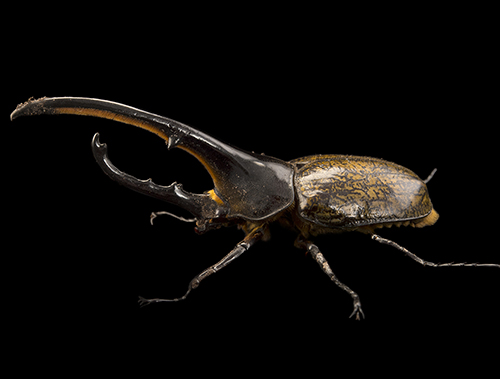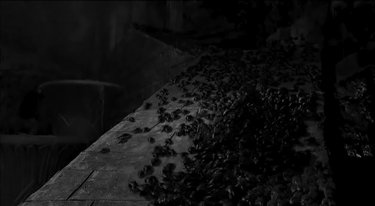Akestos
Surge Lord


OUT OF CHARACTER INFORMATION
Intent: Seeders are a Carrier for Infection Agents
Infection Agents Carried: Terminus
Image Credit: First Image | Gifs Mummy Film | Custom Text
Canon: Karran Beetle
Links: [member="The Hive Mind"] | Akestos | [member="Kylraya"] | The Seed | The Hive | SwarmSurge
GENERAL INFORMATION
Name: Seeder Slicer Beetle
Designation: Non-Sentient
Origins: The Hive Mind, also known as the Swarm's Will when speaking collectively.
Average Lifespan: 12 Days
Estimated Population: Common
Description: The Seeder Slicer Beetle is small with very sharp, large front mandibles. Fast, often in a Seeder-Swarm. It comes in a few different colors, though they all have the same properties, colors denoting a specialized subspecies. They fly, burrow and swim. Most of the Terminus microbe they infect with is stored in a small sack which coats their Mandibles, but it is also carried in their bodily fluids, and released upon death. Surrounding the beetle it has a layer of Terminus Armor.

Breathes: Type IV Environments or Better
Average Height of Adults: 2-4 cm | 0.8-1.5 Inches
Average Length of Adults: 4-10 cm | 1.5-4 Inches
Skin color: Black, Grey, Brown, Green, or Blue.
Hair color: None
Distinctions: The Hive Mind prefers to think small and many, not big whenever possible. Though this isn't always true, it is usually in the case of its seeder agents where it is directly responsible, before the Swarm's collective will takes precedence over the larger collective. In this case bugs. Bugs. Bugs and more Bugs. Adaptable, small and industriously burrowing underground. They carry the Terminus microbe to seed it to new biospheres and sometimes planets. They are too small to pierce thick armor in a single bite, but they can bite into most types and start to chew away at it. Usually, because of the sheer number of them, they are deadly to many things on mass. Thinner armor is especially vulnerable. Though there are three variations, flying, burrowing and aquatic, these are specialized subspecies. All bugs can fly, can burrow and can swim, extending what they need from their thick shell. However, the three subspecies specialize in this and each is especially suited to it. Thicker back wings for the grey beetles, more suited legs for swimming with the Aquatic beetles, and more specialised legs for digging and burrowing.
The Slicer Beetles both infect through their own death for larger creatures eating them, but also when they nest or travel around they often leave a small residue. This is markedly true for when they feed or reproduce. Dead Slicer Beetles are especially infectious, the longer they remain to decay, even to the point of it being airborne when there are enough of them in a pile. Usually, it takes a good few dozens and some time for this to be the case. That said, their bodily fluids need to be avoided by most, that and their mandibles are by far the most infectious part of the organism. Caution is advised when coming into contact with either, or this beetle in general.
Breeding quite fast to create a critical mass. The females lay about 30 eggs before they die, 15 of which might survive the birthing process, the rest eaten by those hatching. There are males, lesser in number than the females by a ratio of about 4-1, who fertilize the female beetles two days ahead of the eggs being laid. As a sustainable critical mass is being reached, often the beetles will use the dead to begin the basis for hive structures, then slow their breeding down so not to overwhelm the eco-system beyond what it can accommodate. They may also begin working to remove rivals for their food supply, so to better swell their numbers while not destroying the balance of the eco-system.
Races: Burrowing Seeder Slicer Beetle (Brown/Black/Green) | Aquatic Seeder Slicer Beetle (Blue) | Flying Seeder Slicer Beetle (Grey)
Force Sensitivity: Non-Sensitive
Strengths:
- Fast and Numerous
- Terminus Armor - Harder Outer Exoskeleton
- Horrific Bite
- Resistant to Acid and Toxins
- Three Variations, Flying, Aquatic, and Burrowing.
- Fast to Breed
- Small
- Alone or even a dozen of them pose no real threat if you are alert.
- When they come in a Seeder-Swarm. You'll hear them coming
- Though they have a harder terminus armor shell, it's not a big creature, they are still squashable with enough of a boot.
- Swarm Based, meaning largely unconscious, dependent on the Hive Mind's attention to be effective, or one of its Convergence Nodes.
- Short Lifespan, 12 Days.
- Requires Meat to breed quickly. If forced to be on a mineral diet, then their birthrate is halved.
CULTURE
Diet: Carnivore. On a dead world, they can eat minerals from the soil, but their birth rate is then reduced to half and this obviously damages any eco-system stability so it is far from ideal.
Communication: Clicking of their huge mandible to other species. They can use their tail to emit a chemical scent and judge situations by other insects movement. The Hive Mind and the Swarm's Will also links their communication.
Technology level: None Existant.
Religion/Beliefs: The Hive Mind is All. Seek and Seed.
General behavior: Burrowing, creating nests, tunnels, seeking out other species to infect. They generally are industrious little creatures, their collective sensory input making up a large part of the basis for the Swarm's unconscious initially on a world. They often seek out sights for swarm nodes and the Hive's nervous system to be extended, being especially gifted at seeking out hidden, unsuspecting locations, often underground but not always. Think where you'd least expect to look, or never go. If they were ever cut off from the Hive completely it is likely they would act like regular beetles.
HISTORICAL INFORMATION
The Hive Mind thinks small. Where it has more focused conscious control is over the small details, before the Swarm's collective unconscious desire for existing or the Surge's desire for expansion can take root, is in the early stages of seeding and infestation. To this end, it uses smaller delivery systems to expand its growth. It has found the Terminus Karran Beetles not only hardy insects, but they can also compete with most creatures their size on an even footing, especially so when working in a large Seeder-Swarm.
There is also a fear factor associated with lots of burrowing or flying insects attacking a target at once, as it can often surprise them or catch them off guard. It hasn't yet recognized the concept of individuality or fearing of survival but it has recognized that conventional methods to stop a large sentient need to be altered when it's a horde of insects is swarming something from all directions. This surprise factor has come in useful in a few instances, where larger single Hivespawn creatures have failed.
However, these beetles are designed first and foremost to be seeding creatures, sent to a world to populate it and get larger nodes ready to expand the Hive Mind's Focus. The distinction between Infection - Seeding and Hive, is still tenuous one in the collective conscious of the swarm, which is often more focused on Hive, Swarm, Surge, or even just Swarm-Surge. Whether there is a fifth stage of conscious to the collective mind, seeding, has not yet been fully integrated into its consciousness.
As always trial and error have brought the Hive Mind to this point, implementing Seeding beetles to better establish itself in new biospheres. It is by no means the final adaptation of the Hive's eventually form of seeding.




